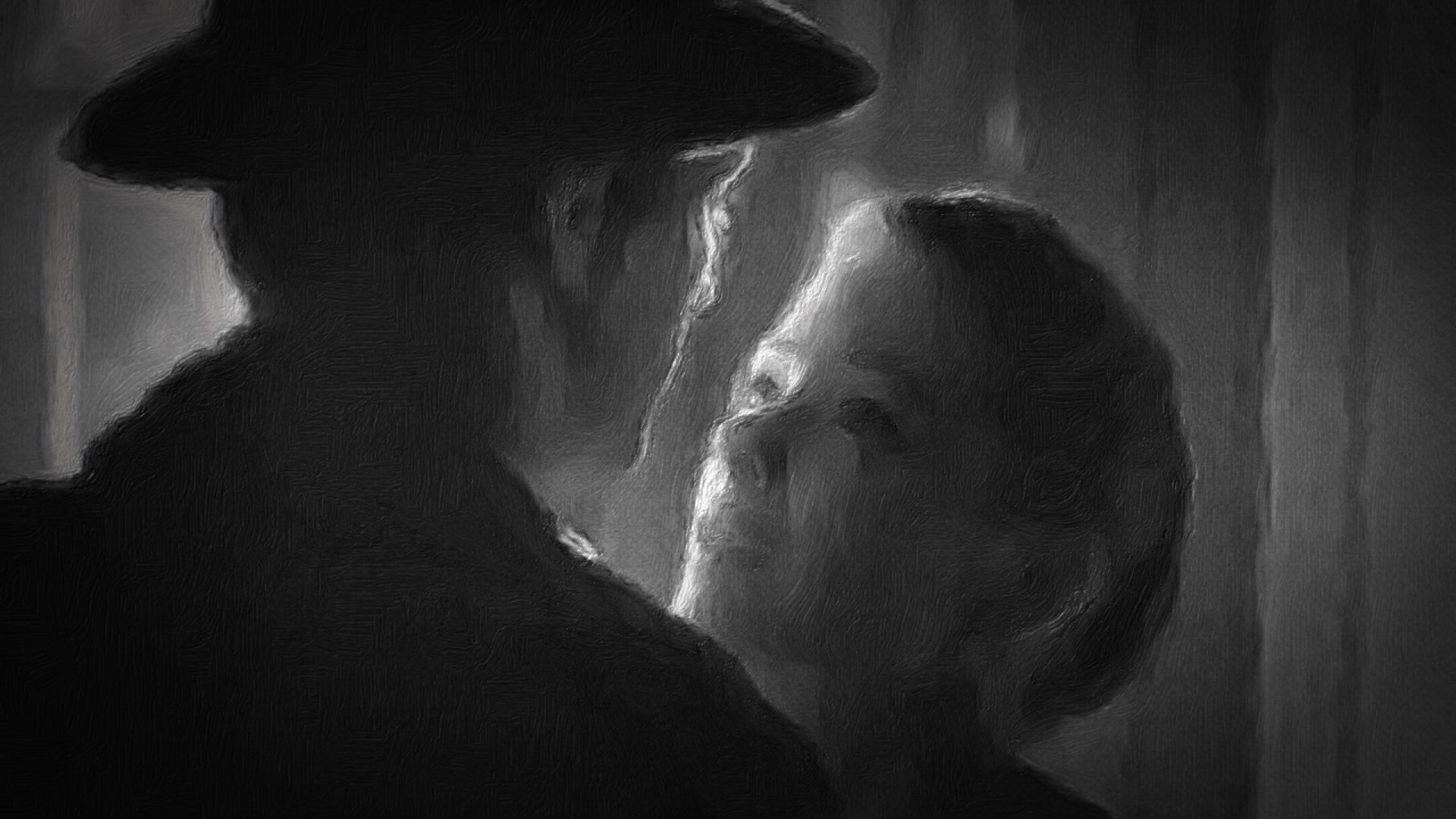
North By Northwest (1959)
»North by Northwest« (1958), directed by Alfred Hitchcock and written by Ernest Lehman, is an iconic suspense masterpiece starring Cary Grant and Eva Marie Saint that enthralls viewers with its tale of mistaken identity, espionage, and danger. The film's tightly woven narrative, fast-paced storytelling, and memorable scenes like the crop-dusting attack and Mount Rushmore climax keep audiences on the edge of their seats. With stunning cinematography, standout performances, and themes of identity and paranoia, "North by Northwest" remains a quintessential Hitchcock classic that continues to inspire and captivate cinephiles and filmmakers alike.
Spider-Man - Homecoming (2017)
When Spider-Man: Homecoming swung into theaters in 2017, it faced a daunting challenge that went beyond its $175 million budget or the pressure of appeasing comic book devotees. The film had to justify yet another reboot of a character whose origin story had already graced screens twice in the previous 15 years. But rather than retreading familiar ground, director Jon Watts and his creative team made a bold choice: they skipped the radioactive spider bite altogether and delivered something far more compelling – a coming-of-age story that speaks directly to the anxieties and aspirations of Generation Z.
Rear Window (1954)
Directed by Alfred Hitchcock, »Rear Window« is a 1954 classic that explores voyeurism through a gripping narrative centered on a wheelchair-bound photographer who becomes obsessed with observing his neighbors. The film's exploration of human curiosity is embodied by protagonist L.B. "Jeff" Jeffries (James Stewart), whose fascination with others' lives mirrors the audience's own voyeuristic tendencies. With masterful cinematography that immerses viewers in Jeff's perspective and complex characters that enhance the story, Hitchcock crafts a suspenseful thriller that remains an iconic and timeless masterpiece in cinema.
Guardians of the Galaxy (2017)
In the pantheon of superhero cinema, James Gunn's Guardians of the Galaxy Vol. 2 stands as a curious anomaly - a neon-bright space opera that doubles as an intimate meditation on family trauma and abandonment. Released in 2017, the film transcends its position as a mere sequel to instead deliver something far more ambitious: a character study wrapped in the technicolor trappings of a cosmic adventure.
Rope (1948)
Directed by Alfred Hitchcock, »Rope« (1948) is a groundbreaking film that experiments with long takes and real-time storytelling, based on Patrick Hamilton's play. The film follows two intellectuals, Brandon and Philip, who commit a murder to prove their perceived superiority, challenging the audience's perception of morality and showcasing the dangerous power of misguided convictions. Through its innovative filmmaking techniques, complex character dynamics, and exploration of themes like morality, sexuality, and identity, "Rope" remains a remarkable and thought-provoking entry in Hitchcock's filmography.
Incredible Shrinking Man (1957)
Directed by Jack Arnold, "Incredible Shrinking Man" (1957) is a science fiction film that delves into human identity, existentialism, and survival. The story follows Scott Carey, who begins to shrink after exposure to insecticide and radiation, leading him to confront the loss of his physical stature, societal status, and sense of self. With its groundbreaking visual effects, compelling narrative, and profound themes, "Incredible Shrinking Man" remains a classic in the science fiction genre, offering a thought-provoking exploration of the human experience and our search for identity and purpose.
The Shadow of the Atom
In 1947, the scientists who developed the atomic bomb introduced a new symbol of global anxiety: the Doomsday Clock. Featured on the cover of their inaugural magazine, Bulletin of the Atomic Scientists, the clock's hands ominously indicated seven minutes to midnight, visually representing humanity’s nearness to nuclear annihilation. This clock became a central metaphor for the cultural landscape of post-war America, a society living under what critic Susan Sontag later described as the "continual threat of two equally fearful, but seemingly opposed, destinies: unremitting banality and inconceivable terror.”
Them (1954)
In the New Mexico desert, mysterious deaths lead Sergeant Peterson and his team to discover giant mutated ants near a nuclear weapons test site, prompting a coordinated effort with the army to destroy the nests, though two queen ants escape. Directed by Gordon Douglas, this 1954 science fiction film uses minimalistic techniques, such as sound and actor reactions, to create tension and suspense, similar to the later films "Jaws" and "Alien." "Formicula" explores the consequences of nuclear technology, showcasing the monstrous aftermath through a compelling narrative that has earned it a classic status in 1950s sci-fi cinema.
Logan (2017)
In »Logan,« set in 2029, the aging mutant Logan, with his waning self-healing powers, takes care of ailing Professor X alongside the mutant Caliban while living in hiding on the U.S.-Mexico border. Their lives take a dramatic turn when Logan is asked to escort a young mutant girl, Laura, to safety, drawing the attention of a ruthless mutant hunter. The film portrays a bleak future dominated by corporations, where marginalized mutants struggle for survival, and highlights the societal decay and moral consequences of violence in a Western-like narrative within the superhero genre.
The Beast from 20.000 Fathoms (1953)
When a massive prehistoric creature emerges from the Arctic ice in 1953's The Beast from 20,000 Fathoms, it does more than just wreak havoc on New York City – it crystallizes America's deepening nuclear anxieties in the early Cold War era. Released just eight years after Hiroshima and Nagasaki, Eugene Lourie's groundbreaking monster film operates on multiple levels: as a thrilling special effects showcase, as a prescient environmental warning, and most significantly, as a powerful metaphor for humanity's uneasy relationship with atomic power.
The Thing (1951)
Released in 1951 and directed by Christian Nyby, »The Thing« is a seminal science fiction film exploring themes of paranoia, fear, and human reactions to the unknown, based on John W. Campbell Jr.'s novella "Who Goes There?" Set in a remote Arctic outpost, the film follows a crew that discovers an extraterrestrial creature capable of taking any form, driving them into a state of distrust and fear as they struggle to identify the alien among them. Known for its groundbreaking special effects and suspenseful narrative, "The Thing" also reflects Cold War-era anxieties about infiltration and subversion, making it a thought-provoking classic in the genre.
The Day The Earth Stood Still (1951)
Directed by Robert Wise, »The Day the Earth Stood Still« follows Klaatu, an alien who lands in Washington to promote peace but is met with hostility and suspicion. After being shot by a soldier, Klaatu escapes and mingles with humans to gauge their capacity for peace, reflecting the film’s critique of Cold War-era politics and its enduring relevance. The film stands out for elevating the sci-fi genre with its focus on human virtues and flaws, outstanding performances, and its call for global cooperation and peace.
Gilmore Girls (2000)
Gilmore Girls (2000-2007), created by Amy Sherman-Palladino, is a popular dramedy that centers on the lives of Lorelai Gilmore (Lauren Graham) and her daughter Rory (Alexis Bledel) as they navigate life in the small, quirky town of Stars Hollow, Connecticut. The show features fast-paced dialogue, strong female relationships, and cultural references that blend humor with heartfelt moments. Its unique tone, dynamic characters, and exploration of complex family relationships set it apart from typical coming-of-age dramas.
Touch of Evil (1957)
Directed by Orson Welles, »Touch of Evil« (1957) is a film noir classic known for its groundbreaking cinematography, complex characters, and intense storyline that explores corruption in a border town while tackling themes of power, racism, and moral ambiguity. The film's visual style, featuring high contrast lighting, dramatic shadows, and innovative long takes, showcases Welles' technical prowess and creates a dark, atmospheric setting. With standout performances by Charlton Heston as the upright Mexican officer Ramon Miguel Vargas and Welles as the corrupt detective Hank Quinlan, the film challenges viewers' notions of morality and justice, making it a significant entry in the film noir genre.
The Third Man (1949)
»The Third Man,« directed by Carol Reed and written by Graham Greene, is a British film noir masterpiece set in postwar Vienna that delves into moral choices against a backdrop of corruption and disillusionment. The film follows writer Holly Martins as he investigates the mysterious death of his friend Harry Lime, uncovering a web of deceit through a nonlinear narrative and striking use of flashbacks. Known for its atmospheric cinematography, innovative filming techniques, and Anton Karas' iconic zither score, »The Third Man« explores themes of betrayal, guilt, and idealism, epitomized by the ethical debate in the famous Ferris wheel scene between Martins and Lime.
Out of the Past (1947)
»Out of the Past« remains a seminal work within the film noir genre, encapsulating its defining features through its visual style, complex narrative structure, and exploration of dark themes. Jacques Tourneur’s direction, combined with stellar performances from Robert Mitchum, Jane Greer, and Kirk Douglas, creates a film that is both captivating and thematically rich. The film’s portrayal of moral ambiguity, fatalism, and the inescapability of the past continues to resonate, making it a timeless example of noir cinema.
Ghostbusters (2016)
1985 was a notable year with Tears For Fears' »Shout,« a-ha's hit song and comic video, and the release of »Ghostbusters« in Germany, which would later become a cult classic. The original film, featuring four scientists turned ghost hunters, skillfully blended comedy, sci-fi, and horror, and amassed a devoted fan base over the years. Over thirty years later, a remake of »Ghostbusters« features female scientists in the lead roles, delivering an entertaining story with a talented cast, including standout performances by Melissa McCarthy, Kristen Wiig, and Kate McKinnon, despite facing criticism from those attached to the original.
The Big Sleep (1946)
Directed by Howard Hawks and based on Raymond Chandler's iconic novel, »The Big Sleep« (1946) is a defining film noir with a complex plot, memorable characters, and sharp dialogue. The film's low-key lighting, moody shadows, and stark contrast create a visual atmosphere that mirrors its themes of moral ambiguity and deception. Featuring Humphrey Bogart as the quintessential film noir detective Philip Marlowe and Lauren Bacall as the captivating femme fatale Vivian Rutledge, the film delves into corruption, betrayal, and moral decay, making it a timeless classic that continues to captivate audiences with its intricate storytelling and enigmatic atmosphere.


















